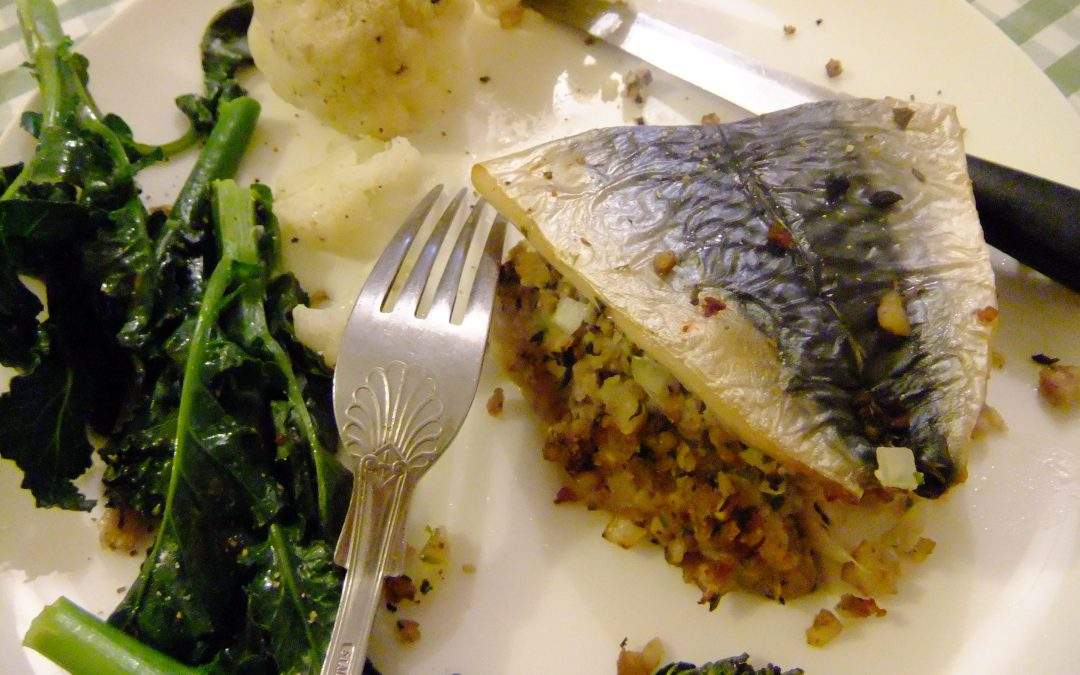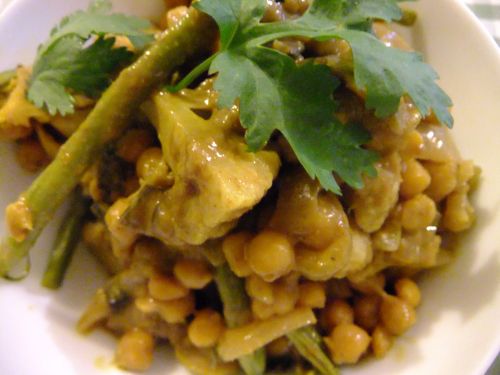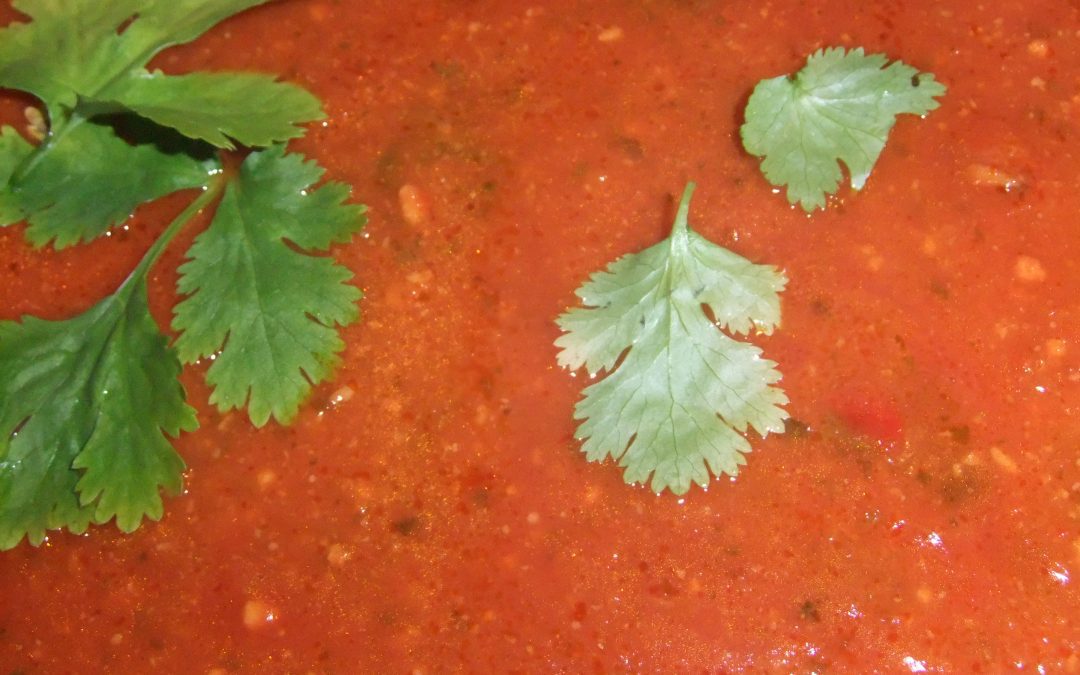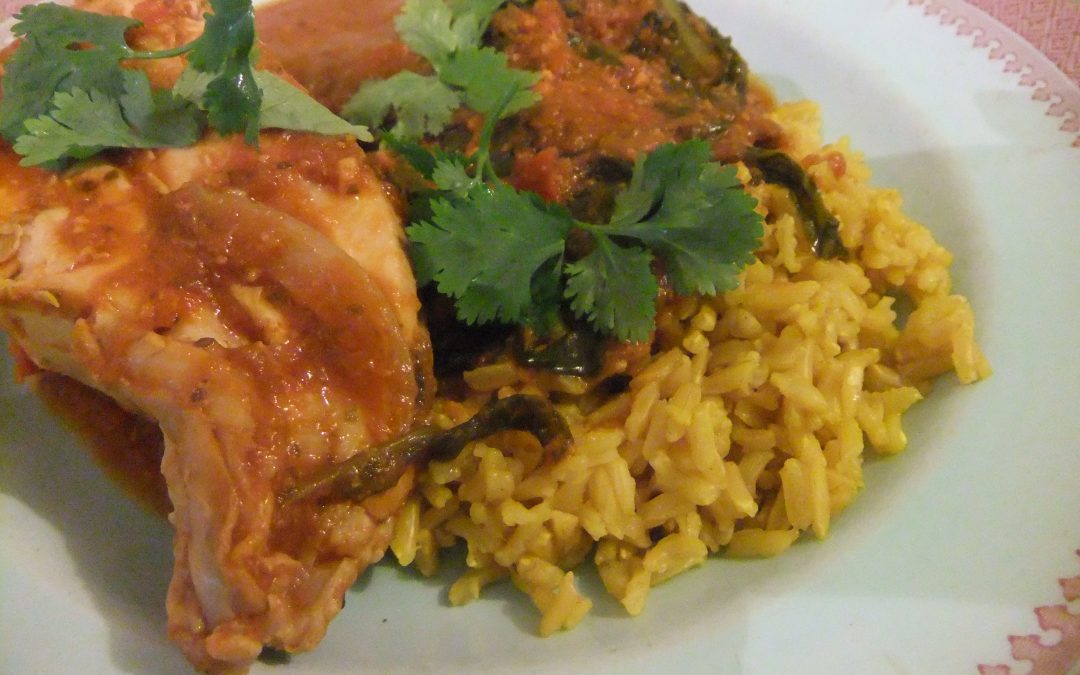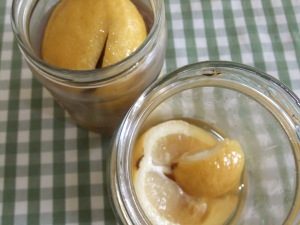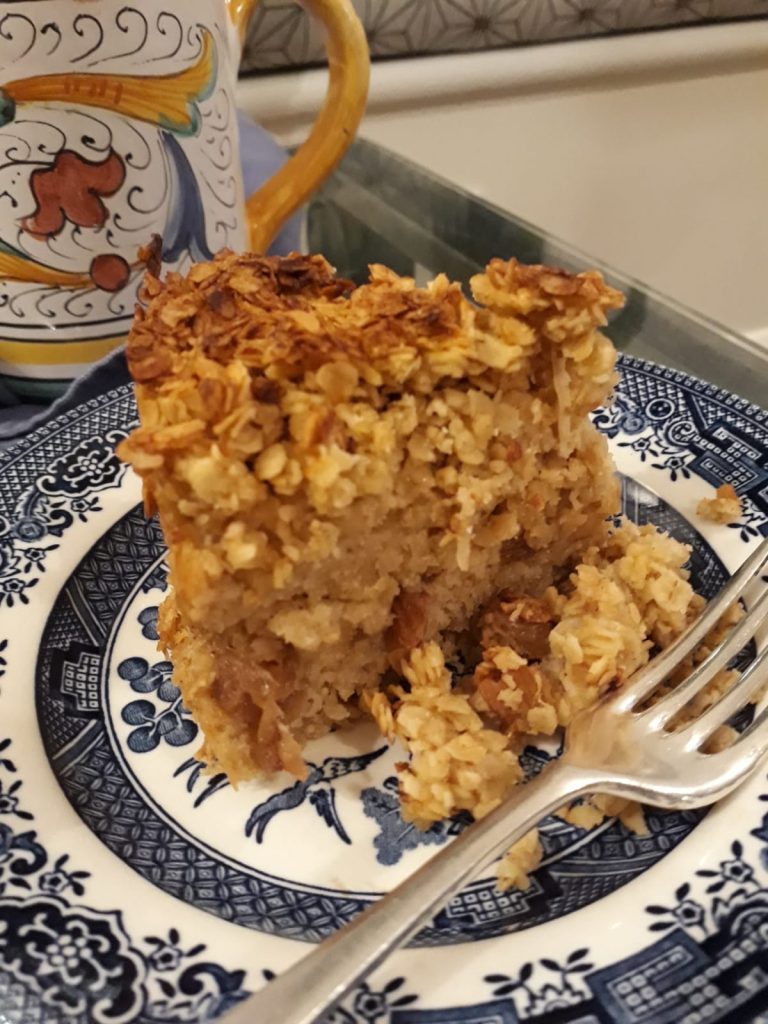
Nov 29, 2013 | Anna's Best Recipes, Cakes, biscuits & bars
This almond paste has a lovely “crunch” to it and tastes no different from the “normal” version. If you want a really smooth, non-crunchy paste, blitz the xylitol for a minute or two in a food processor or coffee grinder before using.
Makes enough to cover a 7″ square cake (or a 6″ cake with leftovers to make marzipan sweets from)
Don’t forget to check my “larder & shopping” section for unusual ingredients
450g ground almonds
450g xylitol or erythritol
2 eggs, organic if possible, otherwise free-range
2 tbsp Irish whiskey or brandy
1 drop pure almond essence (optional)
Gluten-free icing sugar* or finely ground xylitol (do this in a spice grinder) for kneading and rolling.
*most icing sugar is GF but do check the packet
- Mix the ground almonds with the xylitol.
- Beat the eggs, add in the whiskey and 1 drop of the almond essence, then add to the other ingredients and mix to a stiff paste (you may not need all of the egg).
- Sprinkle the work surface with gluten-free icing sugar or xylitol you have ground finely in a mini food processor or spice grinder, turn out the almond paste and work lightly until smooth and all the cracks have disappeared. You can store this in the fridge in an airtight container for up to a week until ready to use. The whiskey preserves the raw eggs in the paste.
Why this is better for you:
Swapping out the sugar for xylitol means this marzipan doesn’t put a massive strain on your immune system and cause inflammation in your body. While xylitol isn’t a vitality-boosting product it appears not to deplete nutrients. It prevents bacteria sticking to your teeth and has NO IMPACT ON BLOOD SUGAR. Erythritol is similar (without the bacteria blocking tooth effects). Unlike sugar, xylitol and erythritol are OK for diabetic people to use. Remember that sweet things like cakes and marzipan do displace really vitality boosting foods like fresh fruit and vegetables from your everyday eating. Like in the past, these treats are meant to be occasional treats and not staples in everyday life.

Nov 27, 2013 | Anna's Best Recipes, Main courses
I took a notion with some leftover stuffing last week and made this and it was lovely, moist and rich. It brought me right back to sister Carmel’s home economics class in my convent school many years ago. Only she used breadcrumb stuffing instead of gluten-free chestnut stuffing. If you want, you can make the stuffing (posted last week) using gluten-free brown breadcrumbs instead of the chestnut. It works just as well provided you add enough oil or butter to moisten the crumbs so they will stick together when pressed with your hand.
For 2
1 1/2 -2 cups of my chestnut stuffing (you don’t have to be exact here)
2 fresh mackerel fillets
I roasting tin, pyrex dish or baking sheet
A little oil to grease
- Preheat the oven to 200C and grease the tin (just the merest hint of oil to prevent the fish sticking).
- Cut the mackerel fillets in half across the fish (not lengthways).
- Lay one half of each fillet skin side down in the tin, top with half the stuffing. Lay the second half on top of each, skin side up this time.
- Bake for 15-20 minutes, depending on the size of your fillets. When done, the point of a skewer or sharp knife will slip easily through the flesh once you have pierced the skin. You want the fish still moist and juicy and not dried out.
Serve with:
Steamed green vegetables and carrots topped with a knob of virgin coconut oil, a drizzle of lemon juice or a glug of extra virgin olive oil.
Why this recipe is good for you:
Mackerel is a great source of vitality-boosting omega 3 oils and baking it rather than frying preserves the omega 3 benefits. Herbs and spices are a powerhouse of anti-inflammatory substances that promote health. Hundreds of thousands of high quality research papers now show that herbs have powerful effects for good on your health – from delaying aging, to helping heal an inflamed digestive system, to even helping your liver cope with too much rich food (and drink). Chestnuts are low GI (low in natural sugars), making them a healthier option than breadcrumbs.

Nov 8, 2013 | Anna's Best Recipes, Main courses
This recipe comes from Food Glorious Food, by Patrick Holford and Fiona McDonald Joyce. I did adapt the quantities slightly, increasing the chickpeas, giving more protein to keep you fuller for longer. We also used curry powder instead of the curry paste recommended and it was still lovely. It isn’t hot. The curry is really a meal in itself without needing accompaniments though we did roast some pumpkin wedges. We coated them in tomato puree and spices according to Patrick and Fiona’s recipe for Indian Spiced butternut squash, also from the same book. Don’t be tempted to leave out the coconut oil – extra (healthy) oils are very important for keeping you fuller longer when you eat animal-free meals.
For 3 big eaters, with a little left for lunch next day:
Remember to go to my “larder & shopping” section for unusual ingredients.
2 tbsp extra virgin coconut oil
2 heaped tbs Thai curry paste or Sharwoods Madras curry powder (or any curry powder – make sure to check labels for gluten if relevant)
2 large onions, sliced
2/3 large cauliflower, broken into bite size florets
2 x 400g tins chickpeas or 220g dried chickpeas, soaked overnight, then boiled till tender to yield 440g when cooked and drained (about 2 mugs)
400ml can full fat coconut milk
100ml hot vegetable stock (use 1/4 teaspoon Marigold bouillon or 1/2 a Kallo vegetable stock cube to make this up)
1 tbs tamari sauce
250g fine green beans (or you could use runner beans, cut into 2″ lengths)
Optional: Handful of coriander, torn or roughly chopped
- Put the oil, curry powder and onions in a large heavy-bottomed saucepan or Le Creuset type pot on a medium heat, mix around, cover with a lid or plate and sweat until softened and translucent – this usually takes around 10 minutes. Add the cauliflower and chickpeas to the pan and stir to coat them in the other ingredients.
- Pour in the coconut milk, stock and tamari, and stir. Bring to the boil, then cover and simmer over a gentle heat until the cauliflower is nearly done. I found this took about 15 minutes.
- Stir in the green beans, cover and cook for another 5 minutes or so until they’re tender. Scatter with the coriander leaves (if using) before serving.
To serve: You can eat this curry on its own, or serve with brown rice or with the gorgeous Indian spiced butternut squash recipe I will be posting shortly.
Why this recipe is good for you:
Thousands of clinical studies show that a wide range of spices have profoundly anti-inflammatory properties, helping soothe joints, digestive system and delay ageing. Sometimes people complain that Indian takeaways upset them, thinking it is the spices. It is more likely to be the heavy use of low quality refined oils that promote inflammation and play havoc with their stomachs!! The chickpeas in this recipe are a good source of protein and also of soluble fibre, that feeds beneficial bacteria in the gut to help your health. Chickpeas, like all beans and pulses, need to be soaked and boiled thoroughl (or tinned!) to make them digestible. Virgin coconut oil and full fat coconut milk contain important medium chain triglyceride fats that feed your brain. MCTs also used by the body directly to make energy, rather than being stored as fat – good news if you want to be slim and trim. People with ME/chronic fatigue syndrome particularly benefit from coconut oil in their diets. Cauliflower is a sulphurophane vegetable, helping your liver detoxify used-up hormones and other waste products. Substituting beans/pulses for meat/cheese in some of your meals every week is a good way of helping your kidney function and supporting joint and bone health. Fresh coriander binds to heavy metals such as mercury and aluminium in the gut, helping their safe elimination. “Silver” fillings give off toxic mercury while “normal” tea is high in aluminium, a known neurotoxin. Helping your body eliminate these is good news.

Oct 31, 2013 | Anna's Best Recipes, Dressings, rubs, spreads, sauces & more
This sauce makes a brilliant base in which to cook or heat vegetables, white fish, tofu, pre-cooked lamb, or cooked chickpeas. It also freezes well for future fast dinners. I have also posted my “Aromatic ginger, tomato & coconut chicken” recipe where I use this lovely sauce to cook chicken fillet and spinach.
For enough sauce for 2 people
Remember to check out my “larder & shopping” section for unusual ingredients
25g creamed coconut cut up roughly OR ½ cup of thick full-fat tinned coconut milk
3-4cm approx of fresh ginger root (enough to give 1 rounded dsp ginger when finely grated)
500g (500ml) bottle of passata (sieved tomatoes – from all supermarkets)
2 green chillies or ¼ teaspoon chilli powder (optional)
1 large handful fresh coriander if you have it
2 large garlic cloves
Version 1 (made with food processor or liquidiser)
1. Peel the garlic, de-seed the chillies (or if you like more heat leave them in), chop the ginger and coriander roughly and throw the lot into a small food processor. A food processor is preferable to jug liquidiser as if gets the ingredients ground up more quickly.
2. Add enough of the passata to get everything going and blitz until smooth.
3. Pour into a saucepan, add the rest of the passata and the creamed coconut or coconut milk and simmer for five minutes until the creamed coconut is melted and the sauce has slightly darkened. The sauce is now ready for use. Or cool and store in the fridge for a day or two until needed, or in the freezer.
Version 2 (without kitchen gadgets)
1. De-seed and chop the chillies, crush or finely chop the garlic, chop up the creamed coconut and the coriander roughly, finely grate the ginger.
2. Put all of this, with the passata, into a saucepan
3. Simmer for 5 minutes until the coconut is melted and the sauce has darkened a little. The sauce is now ready for use. Or cool and store in the fridge for a day or two until needed, or in the freezer.
Add green vegetables of your choice and cubes of raw chicken or fish, or cooked lamb or beef and simmer till everything is cooked. Here are some ideas to get you started:
- Chicken pieces and baby spinach (see recipe)
- Stir the following into the sauce and bubble, covered, until the veg are cooked but still crunchy, and the meat is heated through:
- 150 cooked, cubed lamb, 1 x 454g tin or mug of cooked, drained chickpeas, and 4 cups broccoli florets
- 1 1/2 x 450g tins or mugs of cooked, drained chickpeas plus 4 cups green beans cut into 4cm lengths
- 4 cups broccoli florets or 5cm lengths of runner beans and 300g bite-size cubes of firm white fish such as monkfish, lemon sole or coley
- If you are not wanting to lose weight, and are not following a ketogenic or paleo diet, you could also enjoy some brown rice on the side.
Why this recipe is good for you:
Processed tomatoes with no additives are a rich source of lycopene, an antioxidant that protects your skin from the damaging effects UV rays – like an edible sunblock! Your body absorbs lycopene better from pureed tomatoes than from whole tomatoes. Ginger, tomatoes, turmeric and chillies all have anti-inflammatory properties that are helpful for a healthy digestive system and good, clear skin. Non organic rice can be heavily contaminated with arsenic but fresh coriander bind to this and other toxic metals in your intestines, helping them be eliminated from your body. Spices like ginger and garlic help boost liver function, also to eliminate both natural and man-made toxins. Yet more reasons why herbs and spices are fantastic for you. Using passata packaged in glass jars or bottles means less exposure to toxic bisphenol A (BPA) , which is present in the plastic linings of cartons and tins. Scientific studies link BPA to hormonal imbalances such as low libido, endometriosis, fibroids, and hormone breast and prostate cancer) as well as osteoporosis. Limiting your exposure is good news.

Oct 31, 2013 | Anna's Best Recipes, Main courses
I ate this yesterday and enjoyed every bite. For a change I made it using chicken pieces on the bone (instead of bite size chicken pieces) and so then I cooked it for longer. The sauce of tomatoes, chillies, coriander, garlic and ginger also makes a brilliant cook-in sauce for vegetables, white fish, tofu, pre-cooked lamb, or cooked chickpeas. It also freezes well for future fast dinners.
For 2 people
Remember to check out my “larder & shopping” section for unusual ingredients
25g creamed coconut cut up roughly OR ½ cup of thick full-fat tinned coconut milk
3-4cm approx of fresh ginger root, peeled
500g (500ml) bottle of passata (sieved tomatoes – from all supermarkets)
2 green chillies or ¼ teaspoon chilli powder (optional)
1 large handful fresh coriander if you have it
2 large garlic cloves
2 skinless chicken fillets, ideally organic, cut into bite sized chunks
300g organic baby leaf spinach* or chard
Brown basmati rice (optional) plus ground turmeric for cooking.
Version 1 (made with food processor or liquidiser)
1. Peel the garlic, de-seed the chillies (or if you like your dish quite hot leave them in), chop the ginger and coriander roughly and throw the lot into a small food processor. A food processor is preferable to jug liquidiser as if gets the ingredients ground up more quickly.
2. Add enough of the passata to get everything going and blitz until smooth.
3. Pour into a saucepan, add the rest of the passata and the creamed coconut or coconut milk and simmer for a few minutes till the coconut is melted. Stir.
4. Add the chicken pieces and simmer till tender (about 10 mins)
5. Stir in the spinach, turn up the heat and cook until wilted (about 5 mins)
Version 2 (without kitchen gadgets)
1. De-seed and chop the chillies, crush or finely chop the garlic, chop up the creamed coconut and the coriander roughly, finely grate the ginger.
2. Put all of this, with the passata, into a saucepan
3. Simmer for a few mins until the creamed coconut melts, stirring occasionally.
4. Add chicken and simmer until tender (about 10 mins)
5. Stir in the spinach, turn up the heat and cook until wilted (about 5 mins).
*Conventional spinach is one of the most agri-chemical contaminated vegetables you can buy. If you cant get organic spinach then using chard, sliced green leeks, or steamed-til-tender broccoli or steamed green beans are good substitutions.
Serve with:
- Some steamed broccoli florets.
- If you are not wanting to lose weight and are not on a ketogenic or stoneage/paleo diet you could add (for 2 people):
Brown basmati rice (*boil ½ mug brown rice with 1 mug boiling water and ½ teaspoon ground turmeric, covered, till water is absorbed and rice is fluffed up).
Variation: If you prefer to leave your chicken fillets whole, simply cook for longer in the sauce (about 25 minutes) until cooked through, before adding the spinach for the last few minutes.
Why this recipe is good for you:
Processed tomatoes with no additives are a rich source of lycopene, an antioxidant that protects your skin from the damaging effects UV rays – like an edible sunblock! Your body absorbs lycopene better from pureed tomatoes than from whole tomatoes. Ginger, tomatoes, turmeric and chillies all have anti-inflammatory properties that are helpful for a healthy digestive system and good, clear skin. Non organic rice can be heavily contaminated with arsenic but fresh coriander bind to this and other toxic metals in your intestines, helping them be eliminated from your body. Spices like ginger help boost liver function, also to eliminate both natural and man-made toxins. Yet more reasons why herbs and spices are fantastic for you. Using passata packaged in glass jars or bottles means less exposure to toxic bisphenol A (BPA) , which is present in the plastic linings of cartons and tins. Scientific studies link BPA to hormonal imbalances such as low libido, endometriosis, fibroids, and hormone (e.g. breast and prostate cancer) as well as osteoporosis. Limiting your exposure is good news.

Oct 14, 2013 | Anna's Best Recipes, Main courses
This is another lovely slow-cook recipe for winter. You could also do it on top of the stove so it simmers gently after initially coming up to the boil.
For 2:
250g lamb gigot chops (with bones) or fillet, trimmed of fat and sliced (with bones is better for the flavour)
220g onions (ideally a massive Spanish onion as it saves peeling time!)
2 medium potatoes, ideally a floury type, scrubbed and sliced into rings
1 medium quince/tart eating apple (eg cox’s pippin) washed, and sliced into thick rings (no need to core or peel)
6 large prunes, soaked overnight, drained, stoned and chopped (or use no-soak prunes)
1 level tsp turmeric
2 heaped tsp tomato puree
Juice of 1 small lemon, or to taste
- Preheat the oven to 180C
- Put a few pieces of the meat in an ovenproof casserole and cover with layers of onion, potato, quince, prunes and spices. Repeat the layers until all the ingredients are used up.
- Dissolve tomato puree in 120ml cold water or leftover veg cooking water, then pour into the casserole.
- Cover and cook in the oven until the meat and potatoes are tender. This takes 2 hours if using lamb gigot/fillet. If using unsoaked prunes double the quantity of water in the dish and check every ½ hour to ensure it does not dry out and burn (I found this out by experience!).
- Hand around the lemon juice at the table to be added to taste.
Serve with one of these:
- A large green salad
- Steamed frozen peas
- Steamed broccoli or (even better) purple sprouting broccoli
- Baby spinach leaves and halved cherry tomatoes drizzled with virgin olive oil
Variations:
Use trimmed organic sirloin steak (takes about an hour but be aware quince takes much longer to cook than an hour so use the apple with this instead) or round steak (takes about 2 hours) instead of the lamb.
Why this recipe is good for you:
Powerful antioxidants for health come from the tomato puree (lycopene) and turmeric (curcumin) in this dish. Onions, quince and apples are a great source of soluble fibre to feed beneficial gut bacteria. Meat cooked on the bone releases collageneous substances into the liquid that help nourish and heal the lining of your digestive system. Yes, home made chicken soup and other bone-based broth soups really are good for you. Lamb is a more natural meat exposed to fewer intensive farming practices than some other meats so if you can’t buy organic read meat, its a good choice.

Oct 9, 2013 | Anna's Best Recipes, Breakfasts & smoothies
I knew I would be in a hurry the other morning with an early clinic so I threw together the ingredients for this deliciously thick smoothie the night before and blitzed them in the morning. If you like your smoothie thinner, add more liquid. If you prefer it thicker add less liquid and eat from the glass with a spoon like I do – yum!
For 1 hungry adult:
Remember to consult my “larder & shopping” section for unusual ingredients
2 rounded dsp high quality unsweetened protein powder of your choice – e.g. sprouted rice protein, hemp protein, Sun Warrior protein powder (or for a dairy option try Solgar Whey-to-Go Vanilla)
200ml unsweetened additive-free milk of your choice: almond, hemp, coconut milk, milk or (if you can eat gluten) oatmilk
1 ripe organic pear, washed
1 heaped tsp cocoa powder, organic if possible
1 heaped tbs flax or chia seeds, ideally soaked in water overnight
Optional: A pinch of pure stevia powder or a few drops of stevia drops to sweeten
Optional healthy delicious extras:
1/3-1/2 ripe avocado (extra filling and creamy)
1 heaped tsp soya lecithin granules
1 level tsp spirulina or chlorella powder
1. Cut the flesh off the pear (no need to peel) and throw in the liquidiser.
2. Add all the other ingredients. Blitz for a minute until smoothish. Enjoy.
Variation:
Pear and ginger smoothie: drop the chocolate and substitute 1 dsp grated fresh ginger root (peeled before grating).
Why this smoothie is better for you:
It’s almost always best to chew your food rather than grinding it up and drinking it. This is because food you have to chew stays in your stomach longer and makes you feel fuller longer too. Chewing your food mixes it with your saliva, starting the digestive process (with the enzyme salivary amylase) in the mouth so “chewing” this smoothie rather than gulping it down helps digestion enormously. Soaking nuts and seeds overnight starts the process of sprouting them, making their nutrients more digestible. Chia and flax, when ground, are a rich source of omega 3 fatty acids and minerals. Protein is an essential component of a good breakfast, helping regulate blood sugar to keep energy levels and mood even through the morning. Avocados are rich in monounsaturated fatty acids and vitamin E, great for moisturising skin and body fromwithin. Yoghurt and keffir provide friendly bacteria important for a healthy digestion, clear skin and stable mood. Fermenting makes the soya or dairy milk easily digested. Lecithin granules help emulsify (digest) fats and are a great source of phospatidyl choline. Phos choline is only found in egg yolks, lecithin and organ meats. Chlorella and spirulina are seaweeds so are rich in iodine. Iodine is needed for the body to effectively eliminate oestrogen (oestradiol), which in excess causes breast and other hormone-driven cancers. Fluoride, chlorine and wheat flour products suppress iodine utilisation in the body.

Sep 30, 2013 | Anna's Best Recipes, Main courses
Now the autumn chills are setting in this is a lovely slow-cooked recipe to warm you up. It’s richly-flavoured but really mild. It’s ideal if you are cooking one meal to please meat eaters and people who want to eat less meat at the same time. People can avoid the meat part of the dish and bulk up on extra chickpeas and vegetables and have some delicious fluffy cooked millet grains on the side. Using meat on the bone makes this really flavourful. I usually serve this with some sort of steamed green vegetable (like green beans or dark green cabbage) or a green salad. To stretch things out a bit and save money adding cooked millet to soak up the juices is a winner. If you are new to super-nutritious and super-inexpensive millet, check out my post on how to cook it https://annacollins.ie/how-to-cook-millet-i-cant-believe-its-not-couscous/
For 2:
2 mugs (around 450ml) of leftover veg or chickpea cooking water, or plain filtered water
300g small onions or large shallots (large onions will do if you cant get small ones)
1 mug home-cooked chickpeas (reserve the liquid) or a 400g can of chickpeas
2 large cloves garlic, peeled and roughly quartered or sliced
½ a medium size preserved lemon*, deseeded and roughly cut up into 8 pieces – at a pinch you could use ½ a fresh lemon (skin and pith only). Buy ready-made, or use the easy recipe below and leave to mature for at least 2 weeks before using.
2 chicken breasts on the bone or chicken legs (organic if possible)
1 heaped teaspoon ras el hanout*(see simple recipe below, or buy ready-made)
For unusual ingredients see “larder & shopping” section of this blog
1. Put a heavy bottomed saucepan or cast iron pot on a medium heat to warm with the 2 mugfuls of stock or water. Put the chicken legs or breasts at the bottom of the pot. Peel and add the onions, ras al hanout, chickpeas, preserved lemon and garlic. Put the lid on, give everything a gentle shake to mix everything up. You want the water to almost cover everything.
2. Simmer gently for 1½ to 2 hours (stirring occasionally to coat everything in the liquid and spices) until the onions are translucent and the chicken is falling off the bone.
Money-saving health-boosting tip:
Serve this with cooked millet. Cooked millet wholegrains are a healthy replacement for couscous, but very similar in appearance and texture. For instructions on how to cook, click the “grains” section in the tag cloud on the left of this blog, or search for “how to cook millet” in the search box.
How to make ras el hanout
Traditionally, ras el hanout contained a blend of 40 different spices. This streamlined version includes many of the main spices of the traditional mixture. Keep this mix in an airtight glass jar in a dark place to preserve the aromas for many months. If you like this spice mix, you will use it again and again as tagine stews are really simple to make. If you own a coffee or spice grinder, you can grind your own spices for extra flavour.
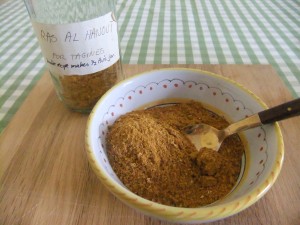
Ras al hanout
Makes ½ a medium size jar of ras el hanout:
2 teaspoon ground cumin
2 teaspoon ground ginger
3 teaspoon turmeric
1½ teaspoon ground cinnamon
1½ teaspoon freshly ground black pepper
1 teaspoon ground white pepper
1 teaspoon ground coriander seeds
1 teaspoon cayenne
1 teaspoon ground allspice
1 teaspoon ground nutmeg
½ teaspoon ground cloves
Instructions: Mix spices together. Store airtight in a dark place to preserve the potency of the spices.
How to make preserved Lemons
These have a distinctive flavour its hard to replicate. These are easily made if you cant find a local Halal shop near you or don’t live near Fallon & Byrne. They take at least 2 weeks before they are ready and will keep for a year. I usually keep mine in the fridge but its not absolutely necessary.  These take about 2 weeks to mature.
These take about 2 weeks to mature.
A carton of Atlantic sea salt or Himalayan (pink) salt
10 unwaxed lemons, organic if possible, scrubbed well
A large glass jar with lid
1. Standing a lemon on one end make a cut down the centre with a sharp knife until you have cut 2/3 of the way down.
2. Now turn the lemon upside down and rotate it 90 degrees. Make another cut at right angles to the original cut, also 2/3 of the way down the fruit.
3. Pack the slits with salt and place in the jar. Continue until the lemons are all packed tightly in the jar.
4. Over the next week or two you will see liquid coming out of the lemons. This is normal. When using a lemon for cooking you will need to discard the seeds and rinse off the salty liquid. After 2 weeks the lemons are ready to use.
Why this is good for you:
Spices in the ras al hanout are a fantastic source of antioxidants to help your health. Spices help reduce inflammation in the digestive system. Research shows that spices also boost liver function and help keep your skin clear and young-looking. Traditionally, Moroccan dishes are cooked on a low flame for a long time. Modern, cheffy recipes telling you to brown the meat are neither as authentic nor as healthy as the traditional ways. Cooking foods at low temperature (stewing) rather than at high temperature (frying, roasting or grilling) is better because low temperatures produce far fewer damaging free radicals than high temperature cooking. Fewer free radicals and more antioxidants from the spices means slowing down the ageing process, reducing the risk of chronic or life-threatening disease, and helping your heart. Stewing meat on the bone releases substances into the food that help support collagen production. This helps your digestive system repair itself and also helps maintain good firm skin and bones in later life.

Sep 25, 2013 | Anna's Best Recipes, Desserts & drinks
We continued to use our glut of cooking apples yesterday and ate this warm out of the oven. You could use eating apples (such as French golden delicious) instead of cookers, in which case you don’t need to sweeten the apples at all. If you have one, use a food processor to blitz the oats to make the crumble super-nice. If you don’t have one, use gluten-free oat flour from the health shop (if you can eat gluten, standard oat flour is fine). You can buy miniature food processors in Argos or department stores and save yourself time and effort.
For 6 people:
1 kg cooking apples
1 tbs water
20 drops stevia (or 2 rounded tbs xylitol)
Alternatively use 1kg sweet eating apples (e.g. French golden delicious) and omit the stevia/xylitol
Optional: handful of blackberries
Remember to check out my larder & shopping section for unusual ingredients
Crumble topping:
100g (1¼ cups) gluten-free porridge oats or gluten-free oat flour (or normal porridge oats/oat flour if you can eat gluten)
50g (1/2 cup) ground almonds
40g (3 level tbs) virgin coconut oil
1-2 rounded dsp xylitol (amount depends how sweet you like the topping)
1. Into a large saucepan put 1 tbs water and 20 drops of stevia (or the xylitol). Put on a low heat to warm while you peel and slice the apples into the pan. Stir around to make sure the stevia/xylitol is evenly distributed. Cover and cook gently for around 10 minutes until the apples are softened.
2. Preheat oven to 170C (for fan oven, for non-fan oven, 185C)
3. Meanwhile make the crumble. Blitz the porridge oats in the food processor or use the gluten-free oat flour. Tip into a bowl with the ground almonds, a dessertspoon of xylitol/coconut sugar and the coconut oil. Chop the coconut oil into the mix with a knife until it resembles breadcrumbs. Taste for sweetness and, if you like, add another dessertspoon of xylitol/coconut sugar and mix around.
4. Grease a 20x30cm pyrex dish or roasting tin – a bit smaller or larger won’t matter much but this size gives you a nice depth of dessert.
5. Empty the cooked apples into the dish and flatten with a spoon. Scatter the crumble evenly over the top.
6. Cook in the oven for around 30 minutes until slightly golden.
6. Serve on its own or with one of the following:
Dairy-free: natural coconut yoghurt (e.g. Abbot Kinneys or Coyo) sweetened with a few drops of vanilla extract
Dairy: a blob of Greek yoghurt
Variations:
- Instead of 100g oats you can use 50g gluten free oat flakes and 50g buckwheat flakes, all blitzed in the food processor to a coarse flour. If you are able to eat gluten, you can also buy oat flour in health stores and use this instead. NB. Unless certified gluten-free, oats are often contaminated with wheat (gluten).
- Add a pinch of ground cloves and a teaspoon of cinnamon to the apple mixture for extra health benefits and delicious fragrance
- You could also use coconut sugar instead of xylitol for extra caramel flavour and crunch – its delicious and contains some minerals.
Why this is better for you:
Apples, especially cooking apples, are a rich source of a soluble fibre called pectin. Soluble fibres like pectin feed beneficial bacteria in your gut. Pectin binds to harmful toxins (e.g. mercury from dental fillings and tune, or arsenic from non-organic rice) in the bowel. This makes them inert and aids their excretion. Oats also contain soluble fibre. Coconut oil is a rich source of medium chain triglycerides that help boost energy rather than being stored as body fat. Unlike most other oils, coconut oil is stable at high temperatures and so is safe to use in cooking. Using pure stevia (as herb) as your zero calorie sweetener for the apples is a 100% healthy form of sweetening. Xylitol is made from birch tree sap and causes fewer spikes in blood sugar than “normal” sugar or honey. I use xylitol for the crumble as stevia didn’t really seem to sweeten the topping enough when I experimented with it. Sweeteners such as xylitol, honey, coconut sugar, molasses and maple syrup are still not actively good for you though, so sweetened foods like this dessert are best kept for occasional treats not everyday eating

Sep 18, 2013 | Anna's Best Recipes, Cakes, biscuits & bars, Desserts & drinks
These are like a cross between a cake and a flapjack and are great for lunchboxes if you feel the need to put baked treats in. You can also eat them warm, topped with a dollop of natural coconut yoghurt or (for dairy) Greek sheep’s yoghurt with a few drops of vanilla extract stirred in. For these, I adapted Theodora Fitzgibbon’s apple flakemeal layer cake recipe into a traybake and swapped butter for virgin coconut oil.
Makes 16 squares
For unusual ingredients, see “larder & shopping”.
325g cooking apples
1 rounded tsp ground cinnamon
A generous pinch of nutmeg, if you have it
30g raisins
50g virgin coconut oil (or butter, if you eat dairy)
1½ rounded tbs rounded tbs honey
1 rounded dsp blackstrap molasses
175g gluten-free porridge oats (or normal if you eat gluten)
Grated rind of an organic lemon (if you cant get organic, scrub in hot water before using)
Juice ½ lemon
1 egg
- Turn on the oven to 180C (165C fan).
- Line a 20-20cm baking tray or brownie tin with greased baking paper.
- In a large saucepan on a very low heat gently melt the honey, molasses and coconut oil. A tip for getting the honey or molasses easily off the spoon is to heat the spoon first in a jug of boiling water.
- Meanwhile chop the raisins, peel and grate the apples and mix everything together with the lemon juice and rind. The antioxidants in the lemon prevent the apples turning brown. When the oil and honey mixture is melted, add the oats, cinnamon, nutmeg, apple mixture to the saucepan and mix to combine. Finally, beat the egg, add in and mix lightly.
- Turn the mixture into the prepared tin, even out and smooth down with a knife or spatula and bake, checking after about 20 minutes. It should take around 30 minutes and be only very slightly browned on top and at the edges. It will still be moist and a little springy to the touch.
Why this recipe is better for you:
Virgin coconut oil is a healthy oil rich in medium chain triglycerides that help increase energy levels in your body and brain rather than being stored as fat in your body. Cooking apples are a very rich source of pectin, which binds to toxic materials in the bowel until they can be eliminated safely. Both apples and oats contain soluble fibre which nourishes beneficial bacteria in the gut. Beneficial bacteria help support immunity, clear skin and regulate bowel function. Honey, molasses and almost all other sweeteners are still high in natural sugars so if you want the ideal diet, aim not to eat them more than a couple of times a week. For transitioning from a high sugar to a low sugar diet though, these are ideal. Molasses is high in iron and chromium so it does have some benefits as well as its lovely toffee flavour. Stevia is the only exception to this as it contains no sugars at all and is 100% healthy.


